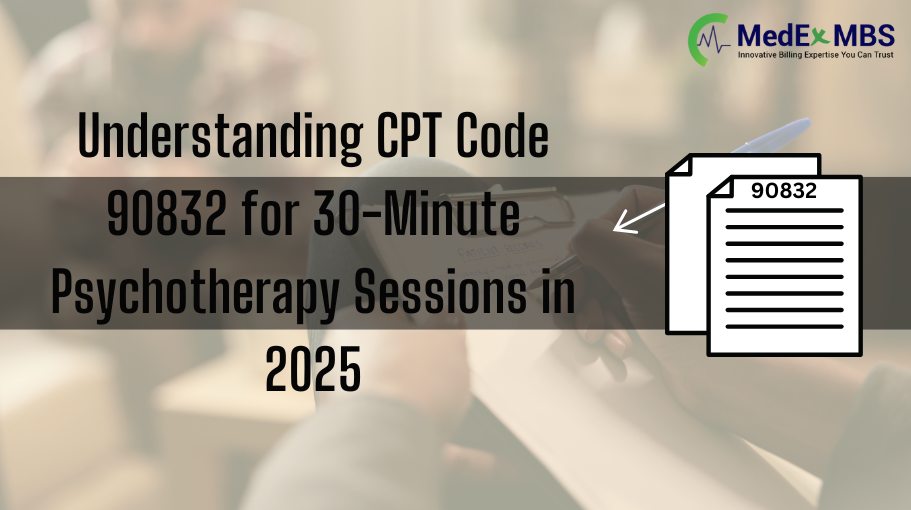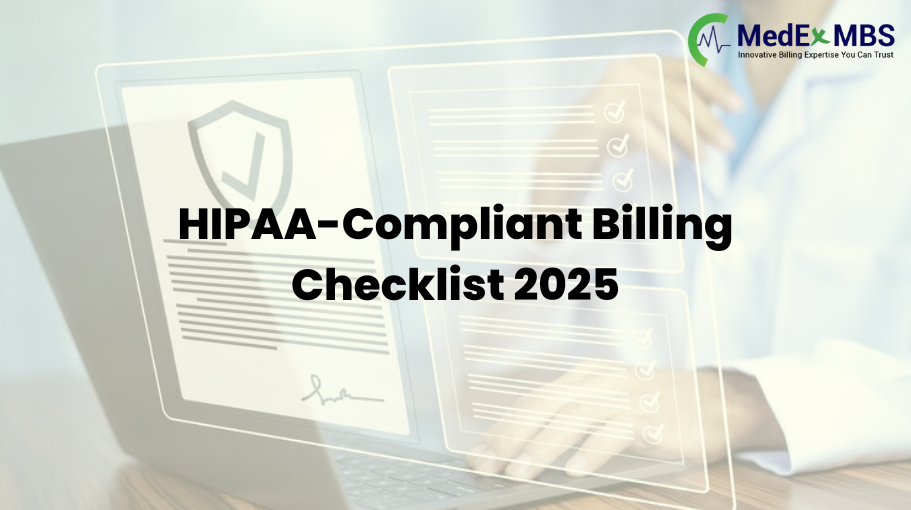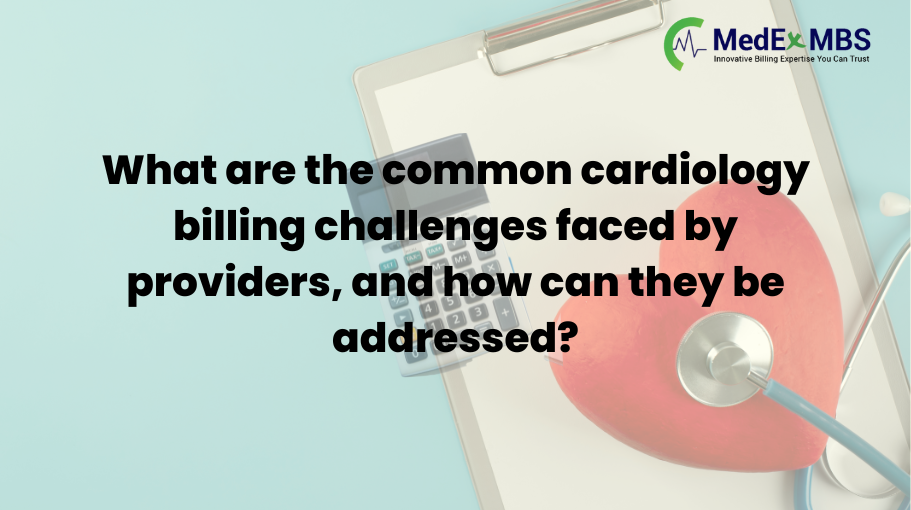Changes in OB GYN Billing Global Periods: What You Need to Know

Only one specific area has been modified. In 2025, new telehealth CPT codes were introduced; however, the adoption by Medicare remains limited. Being aware of these updates safeguards your revenue and ensures compliance, as improper obstetric global billing consistently ranks among the leading causes of claim denials. What is a Global Period in OB GYN? Global-period billing includes prenatal, delivery, and postpartum services consolidated into a single bundled reimbursement for obstetrical care. Instead of billing individually for each prenatal appointment, delivery, and postpartum care, you submit one all-encompassing code that addresses the complete pregnancy experience from the initial prenatal visit to the concluding postpartum examination. The global package typically includes postpartum care for six weeks following delivery, after which additional visits necessitate separate billing. This is distinct from surgical global periods that utilize specific day counts, such as 10-day or 90-day periods. OB-GYN global billing encompasses the entire range of routine pregnancy care, irrespective of duration. Core Codes You Need to Know Global Package Codes Utilize when your practice provides comprehensive pregnancy care: 59510: Cesarean delivery with complete care. 59610: Vaginal birth after previous cesarean with complete care. 59618: Cesarean after attempted VBAC with complete care. Component Codes Utilize when you only manage part of the pregnancy care: 59409/59514: Delivery only (vaginal/cesarean). 59425: Antepartum care, 4-6 visits. 59426: Antepartum care, 7+ visits. 59430: Postpartum care only. Decision Rule: Did you only manage certain aspects while other providers took care of different parts? Utilize component codes. New Telehealth CPT Codes with Limited Medicare Recognition New CPT codes have been introduced for the year 2025, which include 98000-98007 (audio-video), 98008-98015 (audio-only), and 98016 (brief communication). These codes inherently represent telehealth services and do not necessitate modifier 95. However, Medicare currently acknowledges only 98016; 98000-98015 are not reimbursable by Medicare (although some commercial plans may cover them). Virtual consultations that are included in standard prenatal or postpartum care continue to be part of the global package. They cannot be billed separately merely because they are performed through telehealth. However, telehealth consultations for complications or issues that fall outside the standard global package may be billed separately using the relevant evaluation and management codes or code 98016 when applicable. What Did NOT Change? CPT codes remain unchanged from 2024. Global package regulations have not altered. Bundling principles remain consistent. The regulations regarding split and shared visits will persist from 2024, upholding the same substantive portion requirements and the use of modifier FS (applicable only to facility settings). Services that were eligible for separate billing in 2024 will remain eligible for separate billing in 2025. Telehealth Rules for 2025 Bundled services will remain bundled irrespective of the delivery method. Routine prenatal telehealth appointments, virtual postpartum check-ups, and standard pregnancy education sessions held online are encompassed within your global package payment. What Can You Bill Separately? Telehealth visits addressing complications. Virtual care for unrelated medical issues. Coding Requirements Utilize service code 02 for alternative telehealth locations or 10 for a patient’s residence. For traditional E/M codes, most commercial insurers require modifier 95, although Medicare requirements differ by MAC. The recently introduced telehealth CPT codes (98000-98015) do not necessitate the use of modifier 95, as telehealth is inherently encompassed within the code description; nevertheless, it is crucial to highlight that Medicare does not recognize these codes. Important Note Medicare’s expanded telehealth flexibilities (including home as the originating site) are effective until September 30, 2025. Code 98016 supersedes HCPCS G2012 for brief communications. Making the Right Choice: Global vs Component Codes Use Global Codes When Your practice manages the entire pregnancy. Use Component Codes When The patient transitions between practices. You only perform delivery without providing prenatal care. Another practice manages postpartum care. Real Examples A patient moves to a different location during pregnancy: The initial practice charges for the antepartum code, whereas the new practice charges for the global code. Hospital delivery involving a different obstetric group: The prenatal practice charges for the antepartum code, while the hospital group charges for the delivery-only code. You handle the call and provide an unknown patient: Charge the delivery-only code. Essential Modifiers for 2025 Essential Modifiers You Should Use Modifier 25: Significant, separately identifiable E/M service on the same day as another procedure (note that this modifier is often misapplied in OB claims, so ensure proper documentation). Modifier 95: Telehealth services when utilizing traditional E/M codes (not required for new telehealth-specific CPT codes). Modifiers That Don’t Belong on OB Claims Modifier 90: Laboratory services for reference (not applicable during global periods). Modifier 91: Laboratory tests repeated (not applicable during global periods). These laboratory modifiers are irrelevant to obstetric global billing and can cause confusion in claims. Understanding Various Payer Requirements Medicare’s Strategy for OB Global Billing Medicare employs the “MMM” indicator for obstetric global packages, setting them apart from surgical global periods. Telehealth coverage remains available until September 30, 2025, allowing patients to access services from home without geographic limitations. Commercial Insurance Differences Many insurers align with Medicare’s guidelines but may exhibit particular variations: The precise number of postpartum visits included. Distinct telehealth stipulations. State-specific regulations (such as North Carolina’s new F-codes effective after July 1, 2025). It is essential to confirm the policies of individual payers instead of presuming consistent coverage. How to Accurately Bill for OB/GYN in 2025? Standard Pregnancy Care The patient receives comprehensive prenatal care, undergoes delivery, and completes postpartum care within your practice. Code: Employ the correct global code (59400, 59510, etc.) Mid-Pregnancy Transfer If a patient transfers to your practice at 28 weeks, you will provide continuous care and delivery. Code: Apply the global code as you have delivered significant antepartum care along with the delivery. Telehealth for Postpartum Complications Should a patient experience postpartum depression necessitating a virtual consultation beyond standard care? Code: Utilize the appropriate E/M code
What Is Clean Claim Submission? 10 Reasons It’s Vital for Your Healthcare Practice

In the United States, the process of filing medical insurance claims is widely recognized for its complexity and susceptibility to errors, resulting in significant financial losses for healthcare providers amounting to billions of dollars annually. It is noteworthy that approximately 15% of all claims submitted to private insurers are initially rejected. In 2022, hospitals incurred an estimated $19.7 billion in expenses solely for the purpose of appealing and rectifying denied claims, representing a substantial financial burden. Moreover, industry statistics reveal that as much as 60% of claims that are returned are never resubmitted, resulting in lost revenue that practices cannot recover. This highlights the critical importance of clean claim submission. By guaranteeing that claims are submitted accurately (i.e., devoid of errors and fully complete) from the beginning, providers can improve their overall revenue cycle and prevent costly penalties and denials, and the appeal process associated with rejections. Indeed, submitting a clean claim on the first attempt is often recognized as the most effective strategy to boost payment rates and reduce the length of the revenue cycle. What constitutes a Clean Claim Submission? A clean claim denotes a health insurance claim that is fully complete and accurate at the time of its first submission. In essence, the claim is devoid of errors, missing information, or any issues that could delay payment. An official definition describes a clean claim as one that is submitted without any errors or complications (including absent documentation) that would hinder timely payment. This implies that all necessary data is present and precise. For instance, a clean claim accurately encompasses the patient’s information, the provider’s details, the service dates, the procedure codes, the diagnosis codes, and any requisite documents. The insurance company is able to process it without needing to return to the provider for corrections. Conversely, if a claim contains an error (such as an incorrect code or a missing patient birthdate), it is not considered clean; it may be rejected or denied until rectified. The objective of clean claim submission is to ensure that only clean claims are sent out. This process can be likened to submitting a flawless homework assignment that the teacher (insurer) readily accepts. Clean claims are essential as they “fuel your practice’s revenue and cash flow” due to their quicker approval times. Correct Provider and Facility Information: This specifies the provider (and facility, if relevant) along with all required identifiers (e.g., NPI). Accurate Patient and Insurance Details: It is essential that patient demographics and insurance policy details are thorough and validated (to ensure coverage eligibility). Proper Dates and Service Codes: The claim must contain the accurate date and location of service, as well as appropriately coded procedures (CPT, HCPCS, ICD-10), all of which should be included under the patient’s insurance plan. Medical Necessity & Documentation: The services provided must be deemed medically necessary and substantiated by relevant documentation (please attach notes, test results, and prior authorization references as needed). Compliance with Payer Rules: The claim is required to comply with all payer-specific regulations (such as correct modifiers, forms, etc.) and must be submitted within the designated timely filing period (for instance, within 90 days to 6 months of the service date, depending on the insurer). No Technical Errors: All mandatory fields should be filled out with the appropriate formatting, precise IDs or codes, and without any duplicate claims for the same service. This approach to clean claim submission enhances the process by avoiding unnecessary complications such as rejections or requests for additional information, extra documentation, or any other paperwork. By concentrating on every stage of the claim processing within a proficient medical billing system, ranging from patient intake and insurance verification to coding and final review, a healthcare practice can achieve a high rate of clean claims submissions. Now that we comprehend the significance of submitting clean claims, let us delve into ten essential reasons why clean claim submission in medical billing is crucial for the financial and operational well-being of your medical practice. 10 Reasons Why Submitting Clean Claims Is Essential for Your Practice Faster Reimbursements and Improved Cash Flow Employing clean claims in medical billing accelerates payment processing from insurers, thus improving the cash flow of your practice. When a claim includes the correct CPT and ICD-10 codes, the appropriate NPI, and successfully passes the clearinghouse EDI 837 scrub, it moves directly to the payer’s system. Their automated adjudication procedure can authorize it without superfluous exchanges or 277 correction notifications. Numerous states enforce prompt-pay regulations requiring insurers to issue an ERA and EFT within 30–45 days of receiving a clean claim, so ensuring accuracy from the outset guarantees timely cash flow. This consistent revenue covers daily expenses and allows for the acquisition of new laboratory equipment. Comparative Impact of Claim Quality on Revenue Velocity Revenue-Cycle Scenario Average Days-to-Payment Denial / Rework Rate Net Collection Rate Month-End Cash Position Streamlined “Express Lane” (Clean Claim Submission) 14 days 2% 98% of total charges USD 200,000 Delayed “Congested Lane” (Error-Prone Submissions) 45 days 12% 85% of total charges USD 140,000 The comparison illustrates that submitting clean claims is akin to maintaining revenue in an “express lane,” which guarantees predictable, swift, and optimized cash flow for the practice. Higher First-Pass Approval Rates (Fewer Denials) A significant advantage of utilizing clean claims medical billing is the substantial reduction in claim denials. Experts project that 85–90% of denials could be avoided if initial procedures, such as the verification of codes and patient details, are performed accurately. By addressing minor errors, such as omitted ICD-10 codes or erroneous modifiers, most claims can achieve a high approval rate on the first submission, leading to payment without the necessity for corrections. This greatly enhances your financial outcomes, as a claim that is resolved on the first attempt does not face the risk of remaining unpaid. Case Study The Spine & Wellness Center of America, a pain-management group consisting of nine physicians
Understanding CPT Code 90832 for 30-Minute Psychotherapy Sessions in 2025

CPT Code 90832 serves as a specialized billing tool for mental health practitioners conducting brief therapeutic sessions. However, many providers are unsure about its correct application and its diminishing significance in contemporary practice. Although longer psychotherapy sessions are prevalent, it is crucial to comprehend when and how to utilize code 90832 for effective billing practices. This comprehensive guide provides mental health professionals with all necessary information regarding CPT Code 90832, including fundamental requirements and reimbursement rates for 2025, thereby facilitating accurate billing and maximizing revenue for 30-minute therapy sessions. Quick Facts CPT Code 90832 is designated for billing 30-minute individual psychotherapy sessions (16-37 minutes) In 2025, the reimbursement rate for 90832 under Medicare is set at $75.52 for each session. Only licensed mental health professionals are authorized to bill this code for individual therapy Sessions shorter than 16 minutes cannot be billed using CPT Code 90832 This code is increasingly infrequently utilized as providers favor longer session formats Accurate documentation and timing are critical for proper billing and reimbursement What is CPT Code 90832? CPT Code 90832, created by the American Medical Association (AMA) as part of the current procedural terminology system, pertains to individual psychotherapy sessions that last approximately 30 minutes. This specific psychotherapy code mandates that sessions last between 16-37 minutes of direct therapeutic interaction between licensed mental health providers and their patients. The code is categorized under mental health CPT codes and is one of several psychotherapy codes available for billing individual therapy services. Unlike other CPT codes utilized for psychiatric diagnostic assessments or medication management, 90832 is solely dedicated to therapeutic interventions conducted during focused sessions. Key Requirements for CPT Code 90832 Time Range: Sessions are required to have a duration of 16 to 37 minutes to qualify. Service Type: Individual psychotherapy only does not include group therapy, family therapy, or couples therapy Provider Requirements: Must be conducted by licensed mental health professionals Documentation: Demands detailed session notes that validate the medical services provided. Patient Present: All billable time must include direct interaction with the patient The CPT manual characterizes this code as significantly shorter than the more frequently utilized 90834 (38-52 minutes) or 90837 (53+ minutes), rendering it appropriate for particular clinical circumstances that necessitate shorter interventions. When to Use CPT Code 90832 Mental health providers should contemplate billing CPT code 90832 in various specific situations where shorter sessions correspond with clinical requirements and treatment strategies: Appropriate Use Cases Individual therapy sessions lasting 16-37 minutes with documented therapeutic content Routine outpatient psychotherapy appointments for patients who benefit from concentrated sessions Brief therapeutic interventions targeting specific symptoms or behavioral objectives Teletherapy sessions conducted through approved telehealth platforms within the designated time frame Follow-up sessions that do not necessitate the full extent of longer psychotherapy sessions Crisis intervention when brief, focused support is clinically suitable Clinical Scenarios Favoring Shorter Sessions Most providers observe that certain patient demographics respond more favorably to focused sessions. Children and adolescents frequently exhibit shorter attention spans, making 30-minute sessions more effective. Likewise, patients with anxiety disorders may initially manage shorter sessions more effectively before advancing to longer formats. Certain treatment plans explicitly require brief interventions, especially when addressing specific behavioral modifications or when offering supportive therapy during stable phases of care. When NOT to Utilize CPT Code 90832 Understanding the circumstances under which code 90832 should not be employed helps to avert billing mistakes and guarantees the correct selection of codes for various mental health services: Inappropriate Uses Sessions exceeding 37 minutes: Instead, utilize CPT 90834 (38-52 minutes) or 90837 (53+ minutes) Group therapy sessions: For group psychotherapy services, apply CPT 90853 Family or couples therapy: For family psychotherapy or family counseling, use CPT 90846 or 90847 Psychiatric evaluations: For diagnostic evaluation services, employ CPT 90791 or 90792 Medication management visits: Appropriate E/M codes should be used instead of psychotherapy codes Documentation Requirements for Exclusions Providers must document the actual time spent when sessions fall outside the 16-37 minute range to substantiate the correct code selection. Accurate time tracking is essential in the billing process to prevent claim denials and ensure adherence to coding guidelines. Reimbursement Considerations The reimbursement rates indicate that 90832 compensates approximately 75% of the rates for 90834 and 50% of the rates for 90837, reflecting the reduced time commitment. A majority of providers favor longer sessions utilizing 90834 or 90837 as they yield better revenue per session and facilitate more thorough therapeutic engagement. Session Timing Documentation Precise documentation of the start and end times of sessions is crucial for justifying code selection. The billing personnel must confirm that the time spent aligns with the appropriate range for each code to prevent billing inaccuracies. License Requirements and Billing Eligibility Only certain categories of licensed mental health professionals are authorized to bill CPT Code 90832, and the credentialing criteria differ based on payer and location: Eligible Provider Types Psychiatrists (MD/DO): Authorized to bill for all psychotherapy services Clinical psychologists (PhD/PsyD): Licensed to offer and bill for individual psychotherapy Licensed clinical social worker (LCSW): Eligible for independent billing practices Licensed professional counselors (LPC): Permitted to bill when appropriately credentialed Marriage and family therapists (MFT): Authorized for billing individual therapy Nurse practitioners (in certain states): May bill with the necessary mental health credentials Pre-Licensed Provider Considerations Pre-licensed mental health professionals are permitted to bill code 90832 under supervision, contingent upon specific documentation and modifiers. The supervising licensed provider must be credentialed with the insurance plan, and supervision requirements differ according to state regulations. Credentialing Requirements Prior to billing any CPT codes, providers are required to complete insurance credentialing with each payer. This encompasses Medicare provider enrollment for those attending to Medicare patients and distinct Medicaid enrollment for state programs. Add-On Codes and Combinations CPT 90832 can be used in conjunction with specific add-on codes when there is clinical
HIPAA-Compliant Billing Checklist 2025

The complexity of HIPAA-compliant billing has increased significantly. In 2024, healthcare data breaches affected over 133 million records, and enforcement fines consistently exceeded $1 million for each violation. Healthcare organizations are encountering serious risks in this environment. The situation became even more complicated in 2025 when the Department of Health and Human Services (HHS) introduced the first significant update to the Security Rule since 2013. This update includes mandatory multi-factor authentication, encryption requirements, and much stricter oversight of vendors. For those managing a billing department, this means navigating evolving regulations while ensuring smooth operations and the protection of patient data. Regardless of whether you operate a small practice or a large healthcare provider, understanding these changes is crucial to avoid costly penalties and maintain patient trust. How Does HIPAA Influence Medical Billing? Let us begin with the fundamentals. It is essential to understand who is affected by HIPAA and how billing is integrated into these regulatory requirements. Who Must Comply with These Regulations Covered Entities: This includes healthcare providers, health plans, and clearinghouses that manage electronic health transactions. Business Associates: These are vendors and consultants who handle protected health information (PHI). The Three Primary Rules That Affect Billing Privacy Rule: Governs the usage, sharing, and disclosure of patient billing information. Breach Notification Rule: Outlines the procedures for reporting data breaches related to billing records and specifies the timing for such notifications. These regulations work in concert to ensure the security of patient data throughout the entire HIPAA-compliant billing process, from claim submission to payment processing. New HIPAA Compliance Obligations for 2025 The regulatory landscape has undergone significant changes this year. Significant Modifications to Security Regulations (January 2025) Mandatory Multi-Factor Authentication: Now a requirement for accessing the billing system Required Encryption: Both stored and in-transit data must be safeguarded Annual Penetration Testing: Yearly security assessments and biannual vulnerability scans are necessary 24-Hour Vendor Notifications: Business partners must inform you within a day if an issue arises Stricter Enforcement OCR investigations increased by 264% following the ransomware incidents of 2024 More severe penalties if patients experience delays in obtaining their billing records New 6-year mandate for retaining all compliance documentation These modifications have shifted the guidance from “you should probably do this” to “you absolutely must do this.” Proactively addressing these changes is essential to avoid penalties. 10-Point HIPAA-Compliant Billing Checklist for 2025 Conduct a Comprehensive Risk Assessment and Map Your Systems Begin with an exhaustive Security Risk Analysis that specifically targets your HIPAA-compliant billing systems. Document every piece of technology that interacts with electronic protected health information (ePHI) – including practice management systems, clearinghouses, vendor platforms, and more. Create a detailed map illustrating the flow of patient information throughout your billing process, from initial registration to the receipt of the final payment. It is advisable to update this map annually or whenever you introduce new billing software, alter your procedures, or engage new vendors. Your documentation should address the likelihood of various threats, the vulnerabilities identified, and the specific strategies you employed to mitigate each risk. Establish Multi-Factor Authentication (No Exceptions) The upcoming changes to the 2025 Security Rule make it abundantly clear: multi-factor authentication is no longer optional. Anyone accessing billing systems containing ePHI is required to implement it. Deploy it throughout the HIPAA-compliant billing infrastructure: Practice management systems Electronic health record platforms Clearinghouse portals Vendor billing applications Email systems that manage PHI Ensure that individuals are required to verify their identity through at least two methods (password plus phone or app verification). Your MFA system must integrate seamlessly with the existing workflows of your billing team – security measures should not hinder productivity. Encrypt All Data All ePHI within HIPAA-compliant billing must be encrypted, whether it resides on your servers or is transmitted between systems. This includes data stored on servers, laptops, mobile devices, and backup systems, as well as any information exchanged between systems, vendors, and clearinghouses. Verify that your billing software, practice management system, and third-party applications utilize robust encryption (AES-256 at a minimum). The 2025 regulations mandate encryption as a necessity, rather than a luxury. Regulate Access to Information (And Terminate It Promptly) Implement stringent controls so that your HIPAA-compliant billing team can only access the PHI necessary for their specific roles. Establish various user categories such as: Claims processors (limited to claim preparation and submission) Payment posters (focused on payment and adjustment tasks) Billing managers (granted full access along with audit capabilities) Crucially, you must have procedures in place to revoke access within one hour when an employee departs or changes positions. This swift termination of access is a significant aspect of the proposed 2025 updates and prevents unauthorized individuals from accessing sensitive billing information. Develop Your Emergency Response Strategy and Vendor Notification System Formulate a strategy specifically addressing HIPAA-compliant billing security issues, system breaches, ransomware incidents, and unauthorized access to PHI. Your strategy must delineate clear responsibilities, notification timelines, and recovery procedures. Revise every Business Associate Agreement to ensure that vendors are obligated to inform you within 24 hours if they activate their emergency protocols. Organize Your Security Assessments The proposed 2025 Security Rule mandates regular assessments that extend beyond basic risk evaluations. Ensure that a thorough penetration test of your HIPAA-compliant billing systems is conducted annually by certified security professionals. Additionally, perform vulnerability scans biannually to identify potential weaknesses within your network. Document all findings and the corrective actions taken. These records demonstrate your proactive management of security when regulators conduct inquiries. Monitor Everything and Conduct Regular Reviews Enable comprehensive logging across all HIPAA-compliant billing systems to monitor who accesses PHI, the timing of such access, and the actions taken. Your logs should include: Attempts to log in and access patterns Modifications to PHI and adjustments to claims Changes to system settings Unsuccessful access attempts and security notifications Review these logs monthly for any irregularities and perform formal compliance evaluations at least once a year. These assessments ought
What are the common cardiology billing challenges faced by providers, and how can they be addressed?

Introduction U.S. healthcare providers incur losses exceeding $125 billion annually due to billing inaccuracies. Cardiology practices specifically lose between 5% and 8% of their revenue due to claim denials, coding errors, and uncollected payments. These financial losses accumulate rapidly and can adversely affect the economic stability of any practice. The billing process in cardiology is intricate and labor-intensive, involving numerous procedures, evolving regulations, and stringent payer requirements. Minor errors frequently result in payment delays or claim rejections. Additionally, it offers straightforward and effective strategies to address these issues and safeguard your revenue. What Are the Challenges in Cardiology Medical Billing? The frequent updates in coding have rendered Cardiology Billing increasingly complicated. Stringent documentation requirements and escalating payer expectations imply that even minor mistakes can lead to lost revenue, denied claims, and compliance challenges. Below are the key challenges that cardiology practices currently encounter: Coding Complexity and Documentation Issues The bundling of procedures leads to confusion regarding cardiac catheterizations and PCI with stent placements. Tracking global periods for surgeries necessitates precise documentation of follow-up services. Proper application of modifiers (-26, -TC, -50, -RT, -LT, -59, -XS) is crucial to prevent claim denials. Each type of echocardiogram (2D, 3D, stress, contrast) requires the appropriate CPT code. Nuclear cardiology, cardiac MRI, and CT angiography demand accurate coding for various views and contrast usage. Electrophysiology studies and ablations must include comprehensive documentation to satisfy medical necessity criteria. The introduction of new ICD-10 codes for HFpEF necessitates clear documentation regarding the type of heart failure. Providers are required to differentiate between systolic and diastolic failure and indicate whether it is acute or chronic. Billing for CAD must document native vessels versus grafts, severity, and any complications. Documentation should provide evidence-based indications, a risk-benefit analysis, and alternative treatment options. Prior Authorization and Payer Management Advanced imaging techniques, such as MRI and nuclear studies, are subject to stringent approval regulations. Electrophysiology procedures and device implants frequently require multi-step approvals, which can delay patient care. The authorization process typically takes between 7 to 14 business days, hindering scheduling and cash flow. Emergency cases seldom receive retroactive approvals, and the success rate for appeals is low. The rules set by commercial payers differ by region and may incorporate conditions related to value-based care. Revenue Cycle Management Inefficiencies Elevated Denial Rates: 35% attributed to medical necessity 28% due to incorrect coding 22% for absent authorization 15% resulting from documentation deficiencies The clean claim rate is merely 78–82%, falling short of the 85–90% benchmark. Electronic Medical Records (EMR) and billing software frequently fail to synchronize, leading to missed charges. Eligibility checks and real-time updates often lack reliability. Staffing and Training Issues A shortage of certified coders and billers exacerbates errors. High employee turnover disrupts workflows and necessitates continuous retraining. Frequent Regulatory Changes Updates from CMS and revisions to ICD-10 require ongoing training efforts. Failure to remain up-to-date leads to denials or compliance audits. Front-End Intake Problems As many as 50% of denials originate from errors in patient demographics or insurance information. Missing referrals or incomplete eligibility verification can delay claims processing. Poor System Interoperability Electronic Health Records (EHR) and billing platforms often lack seamless integration. The absence of real-time data exchange hampers authorizations and claims processing. Manual Processes Manual workflows contribute to increased coding errors and slow processing times. Paper-based systems complicate scaling efforts and tracking of denials. Denials, Appeals, and Audit Risks The rates of denial in cardiology are 15–20% greater than those in primary care. Appeals can be expensive and often have a low success rate for documentation errors. The frequency of payer audits is increasing, which raises the compliance workload. Value-Based Care and Telehealth New quality-based care models necessitate detailed reporting and the use of different codes. Telehealth requires appropriate modifiers and adherence to payer-specific billing regulations. Patient Billing and Transparency Issues with balance billing lead to disputes and negatively affect patient trust. The absence of upfront cost estimates contributes to increased unpaid balances. Data Security and Compliance Achieving HIPAA compliance becomes more challenging with multiple digital systems in place. Incomplete documentation can lead to penalties and audits. How Do These Challenges Affect Providers? Billing issues in cardiology extend beyond administrative delays; they directly impact revenue. Denials, underpayments, and delayed payments all influence income. Revenue Loss Each denied or underpaid claim results in financial loss and consumes staff time. Numerous cardiology practices maintain overdue accounts for extended periods, which hampers cash flow and diminishes collections. Underpayments are particularly difficult to identify. If not monitored closely, they can go unnoticed. Over time, these minor losses accumulate and adversely affect the financial bottom line. AR Aging and Write-offs Most claims are expected to be settled within 30–45 days. However, many practices have claims that remain unpaid for over 90 days, significantly exceeding the industry average. The likelihood of payment decreases as claims age, with many ultimately being written off. Frequent write-offs indicate underlying issues, such as coding errors or inadequate follow-up. Additionally, older claims are more costly to recover, as time lost translates to money lost. Cost of Denials Challenging a rejected claim can incur significant expenses, varying from $25 to $118 for every claim. This expense encompasses staff time, administrative work, and follow-up efforts. Moreover, not all appeals are successful. When a denial is related to documentation or medical necessity, the chances of approval diminish significantly. Consequently, your team may invest considerable hours on appeals that do not yield payment. How to Address Cardiology Billing Issues Minor adjustments are insufficient to tackle the challenges associated with cardiology billing. It is essential to utilize intelligent tools, established processes, and expert assistance. Companies specializing in cardiology medical billing can aid practices in navigating these challenges and recovering lost revenue. Below are the solutions you should consider. Technological Solutions for Cardiology Billing Contemporary billing processes rely heavily on automation and data analytics. Utilizing the appropriate tools can help
